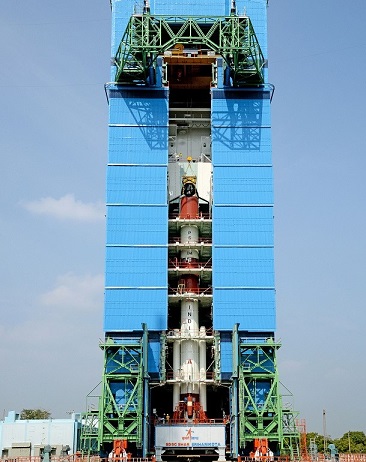
A PSLV rocket soars in the sky. File photo
NEW DELHI (PTI): India is nowhere less than China in the arena of space, and after the success of human space mission project 'Gaganyaan', it will be equal to its neighbour in all aspects related to the field, ISRO Chairman K Sivan has said.
This month, Chang'e 4, the first Chinese mission to land on and explore the Moon's far side facing away from Earth, carried instruments to analyse the region's geology.
India also has an ambitious mission, Chandrayaan-2, to land on Moon's South Pole, a region unexplored by any country so far, Sivan said last Friday.
The plan was to initially launch the mission in April last year, but it has now been postponed to the first quarter of this year.
"We are nowhere less than China," Sivan said in response to a question that sought to draw a parallel between the two space-faring Asian countries.
He added that India was at par in regards to launch vehicles and spacecraft.
India has announced that 'Gaganyaan' will take off by 2022, while China launched its first manned space mission in 2003.
"They had the human space capability, which we did not have, but once we have a successful Gaganyaan project by 2022, we will be equal to them in all aspects," Sivan said.
India and China are two major space-faring giants. While India has launched the South Asian satellite as a gift to its neighbours, China too has been actively engaged with Pakistan and Sri Lanka in these areas.
Sivan said after the launch of South Asian satellite in 2017, Nepal has started using it for broadcasting television in remote and far-flung places "where people have said they have seen a television for the first time" with the help of the satellite.
Elucidating the reasons for Chandrayaan-2 launch delay, he said during the National Experts Review in February last year, it was found that it needed to be improved in terms of robustness.
"Because of the constraints due to the size of the satellite, they cut down many systems. Experts felt that it was a very important mission and we have to increase the robustness. So, the satellite was reconfigured to take care of the improvements. With that, the schedule was December (2018) to January (2019).
"Since all systems are new and we have to go through testing process and we found that testing was not complete and we're not able to meet the February 2019 schedule. The next available slot was April 2019," he said.
Responding to another question on NaVIC, India's own GPS, he said the armed forces have started using the indigenously developed system.
Listing out key priorities in 2019, Sivan said ISRO has planned 32 missions, including Chandrayaan-2.
He said the first flight of Small Satellite Launch Vehicles (SSLVs) will be in July 2019 and the demonstration of a Reusable Launch Vehicle Technology, aimed to save cost, will also take place this year.
GSAT-20, advanced microwave remote-sensing RISAT series of satellites, the advance geo-imaging GISAT series of satellites will also be launched this year, Sivan said.
 Previous Article
Previous Article Next Article
Next Article













The Indian Air Force, in its flight trials evaluation report submitted before the Defence Ministry l..
view articleAn insight into the Medium Multi-Role Combat Aircraft competition...
view articleSky enthusiasts can now spot the International Space Station (ISS) commanded by Indian-American astr..
view article